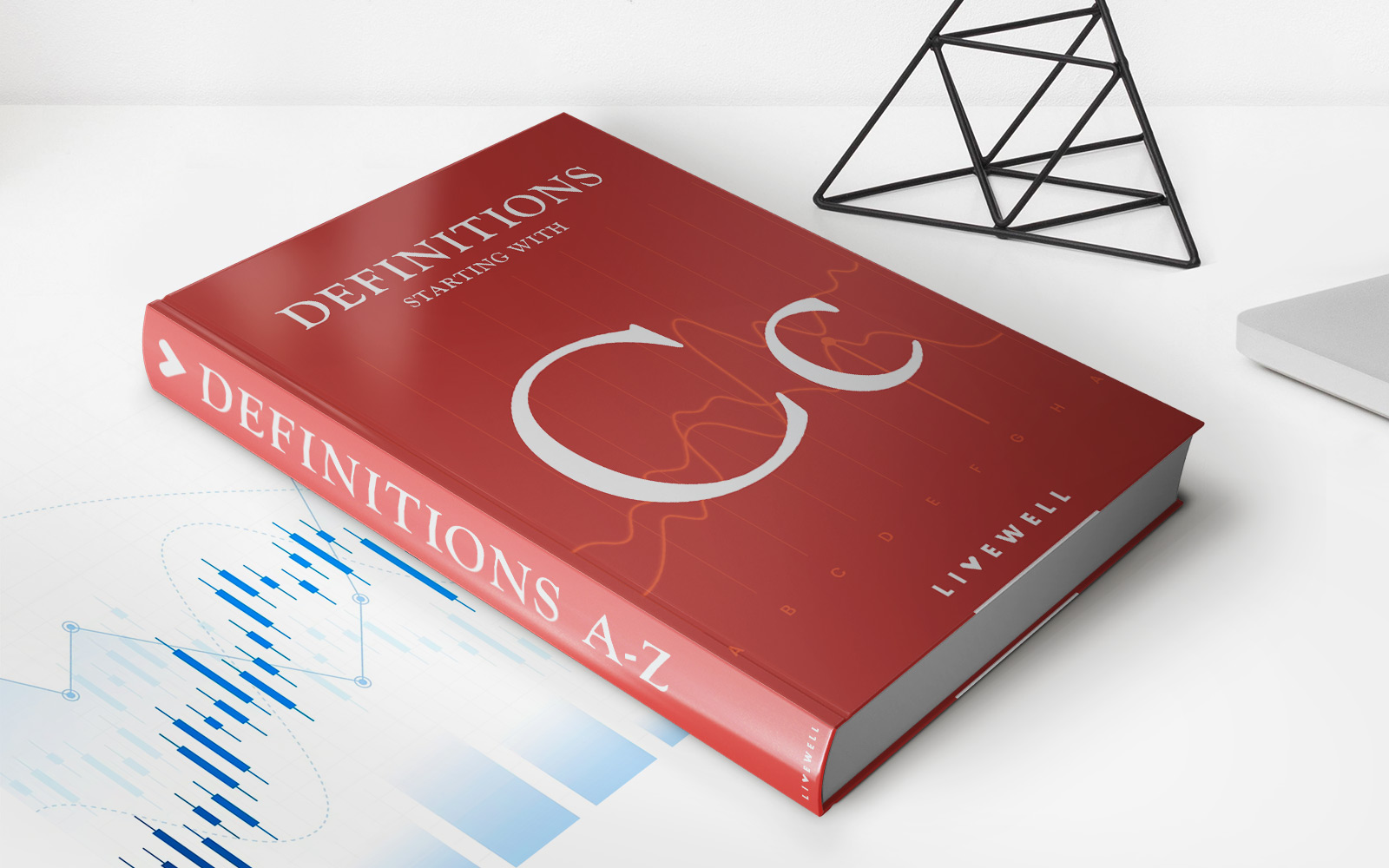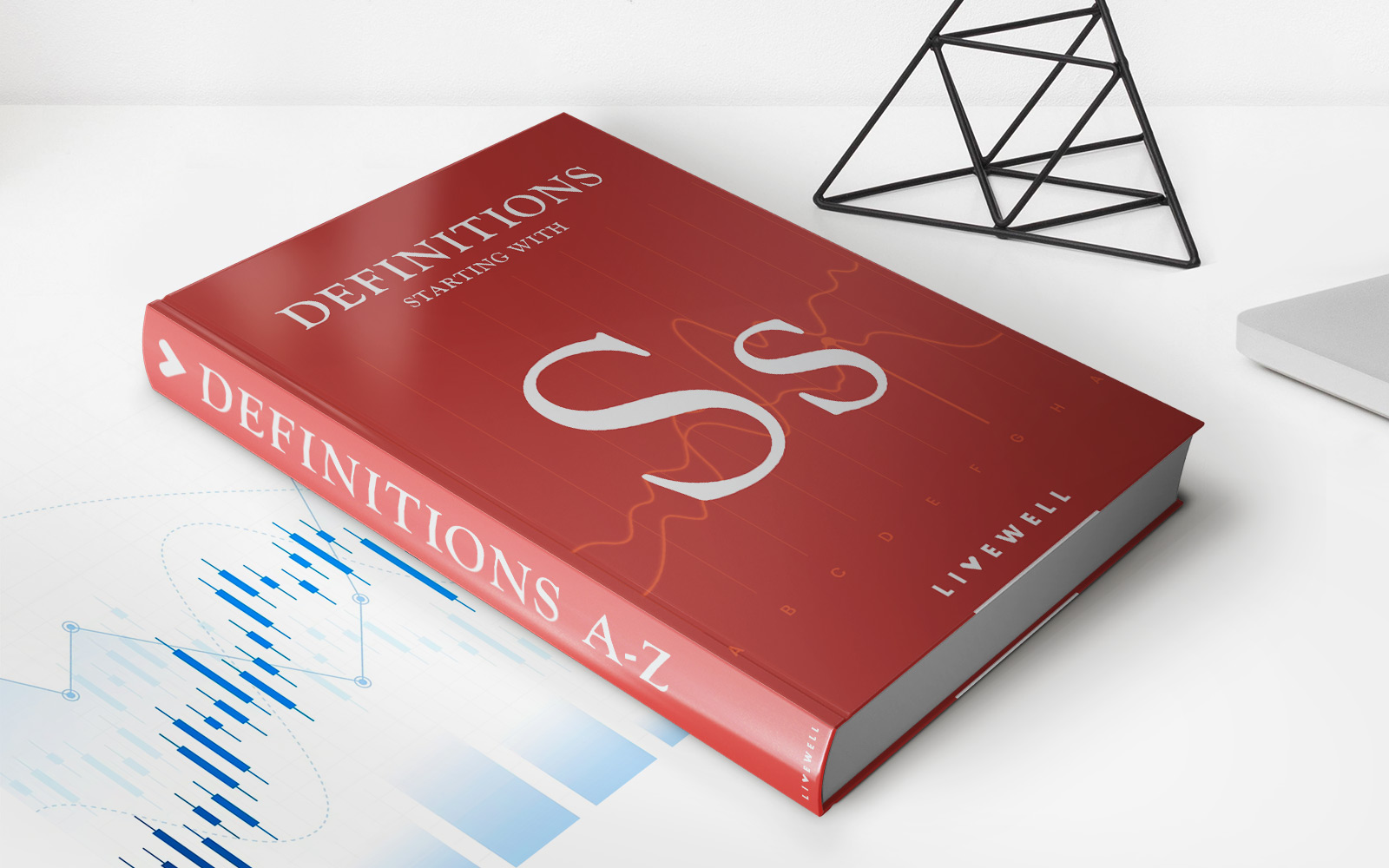Home>Finance>What Happens To Your Life Insurance When You Get Fired


Finance
What Happens To Your Life Insurance When You Get Fired
Published: November 16, 2023
Discover what happens to your life insurance policy when you face job termination. Stay financially secure with our Finance-focused advice.
(Many of the links in this article redirect to a specific reviewed product. Your purchase of these products through affiliate links helps to generate commission for LiveWell, at no extra cost. Learn more)
Table of Contents
Introduction
Life insurance is a crucial financial tool that provides a safety net to protect your loved ones in the event of your untimely demise. It offers peace of mind by ensuring that your family’s financial needs, such as paying off debts or covering educational expenses, are taken care of even if you’re no longer there to provide for them.
Many individuals acquire life insurance coverage through their employers, as it is often included as part of the employee benefits package. This type of coverage, known as group life insurance, offers employees a convenient and affordable way to obtain life insurance without the need for extensive underwriting or medical exams.
However, what happens to your life insurance when you get fired? This is a pertinent question that individuals need to understand, as employment termination can impact your life insurance coverage and financial planning.
In this article, we will explore the implications of losing your job and its impact on your life insurance. We will delve into the options available to you, such as converting your group policy to an individual policy or obtaining new coverage altogether. By understanding these options, you can make informed decisions and ensure that your life insurance needs are adequately met, even in times of job uncertainty.
Understanding Life Insurance
Before we delve into the intricacies of life insurance and employment, let’s take a moment to understand the basics of life insurance.
Life insurance is a contract between an individual (the policyholder) and an insurance company. The policyholder pays regular premiums, and in return, the insurance company provides a death benefit to the policy’s beneficiaries upon the policyholder’s death. The death benefit is a lump sum payment that can be used to cover various financial obligations, such as replacing lost income, paying off debts, or funding future expenses.
There are two primary types of life insurance: term life insurance and permanent life insurance.
- Term Life Insurance: Term life insurance provides coverage for a specified period, typically 10, 20, or 30 years. If the policyholder passes away during the term of the policy, the death benefit is paid out to the beneficiaries. However, if the policyholder outlives the term, the coverage expires, and no death benefit is paid out.
- Permanent Life Insurance: Permanent life insurance, as the name suggests, provides coverage for the entire lifetime of the policyholder. It includes a death benefit component, as well as a cash value component that accumulates over time. Policyholders can use the cash value to access funds during their lifetime through policy loans or withdrawals, making permanent life insurance more than just a death benefit.
When it comes to life insurance obtained through employment, it is typically group life insurance. Group life insurance is offered by employers as a benefit to their employees, often at a more affordable rate compared to individual policies. The coverage amount is usually a multiple of the employee’s salary, with the option to purchase additional coverage if needed.
Now that we have a firm understanding of life insurance, let’s explore how employment termination can impact your coverage and what options are available to you.
Life Insurance through Employment
Many companies provide life insurance as part of their employee benefits package. This group life insurance coverage offers employees a convenient way to obtain life insurance without the hassle of medical exams or extensive underwriting.
Group life insurance policies are typically term policies that provide coverage for as long as the employee remains with the company. The coverage amount is often based on the employee’s salary, with employers offering a multiple of the annual income as the death benefit.
One of the advantages of obtaining life insurance through your employer is that the premiums are often more affordable than purchasing an individual policy. Additionally, many employers contribute a portion of the premiums, further reducing the cost for employees.
It’s important to note that group life insurance coverage is typically not portable, meaning that if you leave your job, your life insurance coverage will cease unless you take specific action.
Life insurance through employment also provides employees with the option to purchase additional coverage beyond the basic policy offered by the company. This can be beneficial if you have dependents or financial obligations that require a higher coverage amount.
Another advantage of group life insurance is that it often provides coverage irrespective of an individual’s health or pre-existing conditions. This means that employees with health issues may still be able to obtain life insurance coverage through their employer, whereas securing an individual policy may be challenging or more expensive.
While obtaining life insurance through employment has its advantages, it’s crucial to recognize the limitations and potential consequences associated with this type of coverage. Next, we will explore what happens to your life insurance when you get fired and how it can impact your financial planning.
Consequences of Employment Termination
When you get fired or experience employment termination, it can have significant consequences for your life insurance coverage. Here are some key points to consider:
- Cessation of Coverage: In most cases, when you lose your job, your group life insurance coverage provided by your employer will also end. This means that you will no longer have the death benefit protection offered by the policy.
- Time Limit: The termination of coverage usually occurs immediately or within a specified timeframe after your employment ends. It’s essential to check your policy documents or speak to your human resources department to understand the exact timeframe for your coverage termination.
- Missed Premiums: If your group life insurance premiums were deducted from your paycheck, losing your job can result in missed premium payments. This could potentially lead to a lapse in coverage if you fail to make alternative arrangements for premium payments.
- No Cash Value: Group life insurance policies typically do not accumulate cash value over time. Unlike permanent life insurance policies, which have a savings component, group policies only provide a death benefit and do not allow for policy loans or withdrawals.
It’s important to understand the consequences of losing your life insurance coverage when you get fired. Without life insurance, your loved ones may face financial difficulties if they depend on the death benefit to cover essential expenses or future plans.
Fortunately, there are options available to address the loss of life insurance coverage resulting from employment termination. In the next section, we will explore these options in more detail.
Note: In some cases, your employer may offer the option to convert your group life insurance policy to an individual policy upon termination. This allows you to maintain coverage, albeit at a higher premium. Be sure to check with your employer or insurance provider to see if this option is available to you.
Options for Life Insurance Coverage
When you experience employment termination and lose your group life insurance coverage, it’s important to explore alternative options to ensure that you continue to have adequate life insurance protection. Here are a few options to consider:
- Conversion to Individual Policy: Depending on the terms of your group life insurance policy, you may have the option to convert it into an individual policy upon termination. This allows you to maintain coverage without the need for underwriting or proving insurability. While the premiums for an individual policy may be higher, this option ensures that you continue to have life insurance protection.
- Obtaining New Life Insurance: If conversion is not an option or if you want to explore different coverage options, you can consider applying for a new life insurance policy. It’s essential to evaluate your life insurance needs and work with an insurance professional to determine the appropriate coverage amount and policy type that aligns with your financial goals and budget.
- Spousal or Partner’s Coverage: If your spouse or partner has life insurance coverage through their employer or an individual policy, you may be able to join their policy as a dependent. This can be a cost-effective option if your partner’s coverage is sufficient for both of you.
- Exploring Other Group Coverage: If you secure new employment, it’s worth investigating if the new employer offers life insurance as part of their benefits package. You may be able to enroll in the group life insurance plan offered by your new employer, providing you with the necessary coverage.
When considering these options, it’s crucial to assess your individual needs, financial situation, and long-term goals. Evaluating the coverage amount, policy terms, premiums, and any additional benefits or riders offered will help you make an informed decision that best suits your circumstances.
Keep in mind that life insurance is an essential component of your financial planning, and it’s important to have coverage in place to protect your loved ones and provide financial security. Taking proactive steps to secure alternative coverage options ensures that you remain protected even in the face of employment changes.
In the next section, we will delve deeper into the process of converting your group policy to an individual policy, if this option is available to you.
Conversion to Individual Policy
If your group life insurance policy allows for conversion, you have the option to convert your coverage into an individual policy upon termination of your employment. This can provide a seamless transition and ensure that you maintain life insurance protection. Here’s what you need to know about converting to an individual policy:
Conversion Window: Group life insurance policies typically have a conversion window, which is a specified timeframe during which you can convert your coverage. This window is usually 30 to 60 days from the date of employment termination. It’s important to be aware of this timeframe and initiate the conversion process within the specified period to exercise this option.
No Medical Examination: One significant advantage of converting to an individual policy is that you do not need to undergo a medical exam or provide evidence of insurability. This can be particularly beneficial if your health status has changed since you initially obtained your group coverage.
Higher Premiums: It’s important to note that converting to an individual policy often comes with higher premiums compared to group coverage. The cost of the individual policy will be based on your age, health, and other factors at the time of conversion. However, this increase in premiums may be worthwhile to ensure continuous coverage and provide the necessary protection for your loved ones.
Policy Options: When converting to an individual policy, you may have the option to choose different policy types, such as term life insurance or permanent life insurance. Consider your financial goals, budget, and coverage needs to select the most appropriate policy type for your situation.
Policy Limits: The conversion option generally allows you to convert up to the maximum coverage amount of your group policy, without the need for additional underwriting. However, it’s important to review the details of your policy to understand any limitations or specific provisions regarding the converted coverage.
If you are considering converting your group life insurance policy, it is advisable to contact your insurance provider or human resources department as soon as possible. They can guide you through the conversion process, provide the necessary paperwork, and answer any questions you may have.
Converting to an individual policy can be an attractive option as it allows you to maintain life insurance coverage without the need for a medical exam. However, it’s essential to compare the cost and coverage of the converted policy with other options available to you, such as obtaining new individual coverage, to ensure you make the best decision for your specific needs.
In the next section, we will explore the process of canceling your life insurance policy if conversion is not an option or is not the best fit for your circumstances.
Cancellation of Life Insurance
If converting your group life insurance policy to an individual policy is not a viable option for you or does not align with your needs, you may need to consider canceling your life insurance coverage. Here are the key points to keep in mind regarding the cancellation process:
Review Policy Terms: Before canceling your life insurance policy, carefully review the terms and conditions outlined in your policy documents. Pay attention to any provisions or penalties associated with early termination or cancellation.
Notify your Insurance Provider: Contact your insurance provider to inform them of your intent to cancel the policy. They will guide you through the necessary steps and provide instructions on how to proceed. Depending on the insurance company, cancellation requests may need to be submitted in writing.
Consider the Timing: Canceling your life insurance policy should be done strategically. Evaluate your financial situation, dependents’ needs, and any outstanding financial obligations before making a final decision. It’s crucial to have alternative measures in place to protect your loved ones financially in the event of your passing.
Understand the Consequences: Canceling your life insurance policy means that you will no longer have a death benefit in place to protect your beneficiaries. It’s important to assess the potential financial impact on your loved ones and consider alternative means of safeguarding their financial security.
Explore Other Coverage Options: Even if you cancel your current life insurance policy, it’s essential to consider obtaining a new policy or exploring alternative coverage options. Life insurance plays a vital role in providing financial protection and peace of mind for your loved ones, and it’s crucial to have a plan in place to meet those needs.
When canceling your life insurance policy, it’s advisable to seek guidance from a financial professional or insurance advisor. They can assess your individual circumstances, understand your financial goals, and provide insights on how to best protect your family’s financial future.
Remember, life insurance is a crucial aspect of your financial planning and offers valuable protection for your loved ones. While canceling a policy may be necessary in certain situations, it is important to carefully weigh the implications and explore alternative coverage options to ensure the financial well-being of your beneficiaries.
In the next section, we will discuss obtaining new life insurance coverage to replace the policy that has been canceled or terminated.
Obtaining New Life Insurance
If you have lost your life insurance coverage due to employment termination or cancellation of your previous policy, it is essential to consider obtaining new life insurance to protect your loved ones financially. Here are some key points to keep in mind when obtaining new life insurance:
Evaluate Your Coverage Needs: Assess your current financial situation, outstanding debts, future obligations, and the needs of your dependents. This evaluation will help determine the appropriate coverage amount to ensure that your loved ones are adequately protected in the event of your untimely passing.
Term vs. Permanent Insurance: Consider the advantages and disadvantages of term life insurance and permanent life insurance. Term life insurance provides coverage for a specified period, while permanent life insurance offers lifelong coverage with a cash value component. Choose the policy type that aligns with your financial goals and budget.
Research Insurance Providers: Look for reputable insurance companies that offer competitive rates and excellent customer service. Compare policy options, coverage terms, and premiums from multiple providers to find the best fit for your needs.
Undergo the Application Process: When applying for new life insurance, you will need to complete an application form and may be required to undergo a medical exam. The insurance company will consider factors such as your age, health, lifestyle, and medical history to assess the risk and determine the premium rate.
Consider Riders and Additional Benefits: Explore optional riders or additional benefits that can enhance your life insurance policy. Riders, such as accidental death benefit riders or critical illness riders, provide additional coverage options to address specific risks or circumstances.
Review Policy Terms and Conditions: Carefully read through the terms and conditions of the policy before signing the contract. Understand the coverage limits, exclusions, premiums, and any other relevant details to ensure that you are fully aware of the policy’s features and provisions.
Work with an Insurance Professional: Consider seeking guidance from an insurance professional or financial advisor who specializes in life insurance. They can provide personalized advice, help navigate the application process, and assist in selecting the most suitable policy for your needs.
Obtaining new life insurance can provide you with peace of mind, knowing that your loved ones will be financially protected in case of your passing. It’s important to act promptly to secure coverage to avoid leaving your family vulnerable during the transition period.
Remember, life insurance is a long-term commitment, and it’s advisable to review your coverage periodically as your circumstances may change. Regularly reassess your coverage needs and make adjustments as necessary to ensure that your life insurance policy continues to meet your evolving financial goals.
In the final section, we will discuss some factors to consider when making decisions regarding your life insurance coverage.
Factors to Consider
When making decisions regarding your life insurance coverage, there are several factors to consider to ensure that you make the best choice for your needs and circumstances:
Financial Obligations: Evaluate your current financial obligations, including outstanding debts, mortgage payments, and future expenses such as education costs or healthcare needs. These financial obligations should be considered when determining the appropriate coverage amount of your life insurance policy.
Family and Dependents: Assess the needs of your family and dependents. Consider the number of dependents you have, their ages, and their financial reliance on you. Understanding your family’s financial needs will help determine the level of protection required to maintain their standard of living in case of your passing.
Budget and Affordability: Determine how much you can comfortably allocate towards life insurance premiums within your budget. Evaluate the costs of different policy types and coverage amounts to find a balance between adequate coverage and affordability.
Health and Insurability: Your health and insurability play a significant role in obtaining life insurance coverage. Understand any pre-existing medical conditions or lifestyle factors that may impact the premium rates or insurability. Consider working with an insurance professional who can guide you through the process and explore options tailored to your unique circumstances.
Policy Type and Term: Decide on the appropriate policy type and term that aligns with your financial goals. Determine whether term life insurance or permanent life insurance is the best fit for your needs. Consider the term length, cash value accumulation, and flexibility of the policy when evaluating different options.
Future Financial Goals: Think about your long-term financial goals and how life insurance fits into your overall financial plan. Assess whether you need coverage for a specific period or if lifelong protection is necessary. Consider how life events such as marriage, having children, or starting a business may impact your coverage needs.
Insurance Provider Reputation: Research the reputation, financial stability, and customer service record of insurance providers under consideration. Look for providers with a strong track record of paying claims promptly and providing reliable customer support.
Policy Riders and Add-Ons: Consider any riders or additional benefits that can enhance your life insurance policy. Riders such as waiver of premium riders or accelerated death benefit riders can provide added flexibility or financial support in case of certain circumstances like disability or critical illness.
By carefully considering these factors, you can make informed decisions that align with your unique needs, financial objectives, and family dynamics. Remember to regularly review your life insurance coverage and make adjustments as necessary to ensure that your policy continues to meet your evolving needs.
Now that we have explored these factors, it’s time to wrap up our discussion.
Conclusion
Navigating the world of life insurance can be complex, especially when it comes to understanding the implications of employment termination on your coverage. Losing your job can result in the cessation of your group life insurance, leaving you and your loved ones vulnerable without the necessary financial protection.
However, there are options available to address this situation. Converting your group policy to an individual policy, obtaining new life insurance coverage, or exploring alternative group coverage are all potential paths to ensure that you maintain the necessary life insurance protection.
When making decisions about your life insurance coverage, it’s crucial to evaluate factors such as your financial obligations, the needs of your family and dependents, your budget, and your health and insurability. Consider the different policy types, coverage options, and riders available to find the best fit for your specific circumstances.
Working with an insurance professional or financial advisor can provide invaluable guidance and support throughout the process of understanding your life insurance options and selecting the most suitable coverage for your needs.
Remember, life insurance provides essential financial security for your loved ones in the event of your passing. It’s a responsible step towards protecting your family’s future and ensuring their well-being even when you are no longer there to provide for them.
Whether you convert your group policy, obtain new coverage, or explore alternative options, taking action to secure life insurance is a crucial part of your overall financial planning. Regularly reassess your coverage needs, review your policies, and adapt your coverage as necessary to keep pace with your evolving life circumstances.
By understanding the impact of employment termination on your life insurance and exploring the available options, you can ensure that you have the right coverage in place to protect your loved ones and provide peace of mind for the future.
Make the decision to prioritize your family’s financial security today by taking the necessary steps to secure appropriate life insurance coverage.














